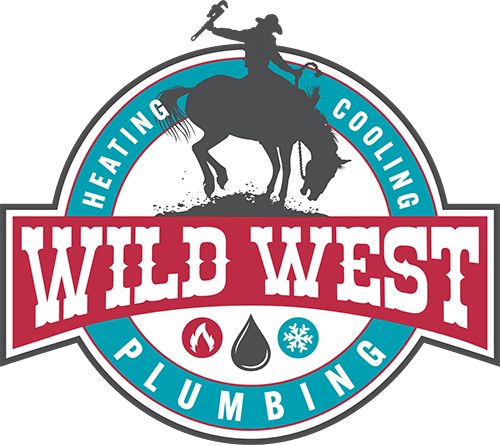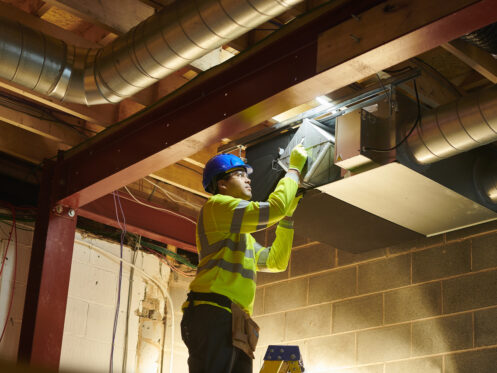Indoor air pollution can have a detrimental effect on health and overall quality of life. According to the Environmental Protection Agency (EPA), the concentration of indoor air pollution can reach up to five times higher than outdoor pollution levels. Since many U.S. residents spend up to 90% of their time indoors, the presence of indoor air pollutants can have a direct impact on everyday activities within buildings.
The World Health Organization (WHO) estimates that approximately 4.2 million individuals worldwide die each year due to exposure to indoor air pollution. People in developing countries experience indoor pollutant exposure due to fuel burned inside buildings for cooking or indoor heating. However, people in the developed world are also at risk of exposure due to the increased use of tightly enclosed, energy-efficient buildings that can trap contaminated air inside. A look at the top 10 most common indoor air pollutants can equip you with the information necessary to take the first steps to safeguard your home and family.
1. Mold Spores
Mold is a form of fungi that grows naturally in almost every part of the world. This type of fungi reproduces by emitting mold spores that settle on damp surfaces or within dark spaces of the home. Mold is a biological pollutant that can rapidly spread on walls, ceilings, and floors. You may also find mold in bathrooms, kitchens, basements, closets, and any other rooms that are dark and humid. Unfortunately, inhaling mold spores can worsen health issues like asthma, allergies, and nasal or respiratory illnesses.
2. Carbon Monoxide (CO)
Carbon monoxide is a lightweight, odorless, and tasteless waste gas that results from the incomplete combustion of fuel. Each carbon monoxide costs a carbon atom and an oxygen atom held together via a triple bond. The gas is colorless and invisible to the naked eye. Within households, high concentrations of carbon monoxide can be emitted from poorly vented or defective appliances during the fuel-burning process. Types of household items that can emit carbon monoxide if they malfunction may include the following:
- Wood-burning stoves or fireplaces
- Gas stoves or gas heaters
- Space heaters, kerosene lamps, or water heaters
- Propane appliances, lawn equipment, or power tools
- Charcoal grills or appliances
- Portable generators
- Automotive engines left idling in enclosed garages
Carbon monoxide is highly poisonous and flammable. Inhaling this gas can interfere with the bloodstream’s ability to distribute oxygen to essential organs and tissues. Carbon monoxide poisoning can cause illness, coma, or death.
3. Volatile Organic Compounds (VOCs)
Volatile organic compounds (VOCs) are lightweight chemicals that readily dissolve into household air at the average room temperature. The nature of VOCs makes them common solvents in household products. Unfortunately, the reason these compounds are “volatile” is that they evaporate quickly and can remain in the environment for a long time. Common types of products that may contain VOCs include the following:
- Paints or glues
- Disinfectants or cleaning products
- Aerosol products
- Petroleum
- Cosmetics
- Artificial plants
- Cooking oil fumes
- Air fresheners
- Household candles
- Insect repellents
Exposure to VOCs can cause issues like perpetual headaches, nasal irritation, skin reactions, or nausea. Research shows that VOCs can worsen hormonal imbalance, disrupt proper endocrine function, or interrupt processes within the central nervous system.
4. Indoor Particulate Matter
Indoor particulate matter is a mixture of small particles that easily disperse and can remain suspended in household air. Also known as particle pollution, indoor particulate matter can come from combustion within fireplaces as well as poorly ventilated heaters. Particulate matter is also a by-product of some household activities like woodworking. The problem is that when dispersed particles have a diameter of 10 micrometers or smaller, these pollutants can pass through the human nasal cavity and get inside the lungs. Unfortunately, constant exposure to indoor particulate matter may increase the risk of developing respiratory illnesses or lung cancer.
5. Tobacco Smoke
Tobacco smoke is one of the most well-known indoor pollutants. Sources of tobacco smoke include cigarettes, cigars, vaping machines, smoking pipes, or hookahs. Scientists estimate that dried tobacco can harbor up to 7,000 different chemicals. At least 70 of these chemicals within tobacco are proven carcinogens and toxic to humans and household pets.
According to the American Lung Association, secondhand smoke (SHS) exposure plays a role in the deaths of over 40,000 U.S. residents each year. Research suggests that exposure to secondhand smoke may also increase the risk of sudden infant death syndrome (SIDS) among babies, and smoking can also increase the likelihood of chronic obstructive pulmonary disease (COPD) among adults and the elderly. Many air quality experts strongly advise against smoking tobacco indoors.
6. Pesticides
Pesticides are toxic substances created to kill undesired organisms. Related chemicals include herbicides, nematicides, and fungicides. For household use, pesticides can occur in the form of sprays, gels, powders, pellets, or bottled liquids. In fact, research from the Environmental Protection Agency found that around 75% of U.S. homes have at least one indoor pesticide. Unfortunately, pollution from pesticides also hurts humans and pets. Pesticides can cause endocrine imbalance, and long-term exposure may increase the risk of certain cancers.
7. Pet Dander
Dander is a biological material that can shed from any animal with fur, skin, hair, or feathers. Due to the nature of animal grooming, dander can also get into pet saliva or urine. Common sources of household dander include cats, dogs, rabbits, ferrets, hamsters, or pet birds. When dander flakes disperse throughout indoor air, they act as allergens that can create respiratory issues in human beings.
8. Radon
Radon is a type of radioactive gas that occurs naturally in various types of residential soil. When radon gas escapes from soil, it can seep into your house and become trapped within indoor air. Because radon is odorless and tasteless, it is undetectable to the human senses alone. According to the Center for Disease Control, long-term exposure to radon is a leading cause of respiratory cancer among non-smoking individuals. Homeowners who live in areas with high levels of radon should schedule regular testing during annual HVAC maintenance checkups.
9. Nitrogen Dioxide
Nitrogen dioxide is a chemical compound with an acrid and pungent odor. It is poisonous in high quantities. Excessive nitrogen dioxide can build up in the home due to defective gas appliances or poorly ventilated combustion units. It is also a by-product of some indoor hobbies like welding.
10. Lead
Lead is a sturdy metal with a low melting point. Because of its versatility, lead was once a common additive in household products like paint. Over time, however, researchers found that extensive exposure to this metal can damage the brain and nervous system. For this reason, the manufacturing of lead-based paint has ended in most developed countries. However, household exposure can still occur from ineffective removal of dried paint. Any type of careless scraping, sanding, or burning can produce tiny airborne particles that compromise indoor air quality.
Contact Us Today
Indoor air pollutants have a negative impact on your household’s environment. Fortunately, the experts can help. Wild West Plumbing, Heating & Cooling offers indoor air quality services for homes in Kalispell, MT and surrounding areas. We offer residential air purification and conduct testing to determine which contaminants are airborne throughout your home. In addition, we use UV light technology to eliminate problems like mold and bacteria. Our experts can help improve air quality and improve the overall performance of your HVAC system. If any HVAC unit itself needs installation or repair, our technicians can help with that as well. No matter the air quality issue, we are at your service so that you can breathe easier. Contact Wild West Plumbing, Heating & Cooling today for all IAQ needs.


